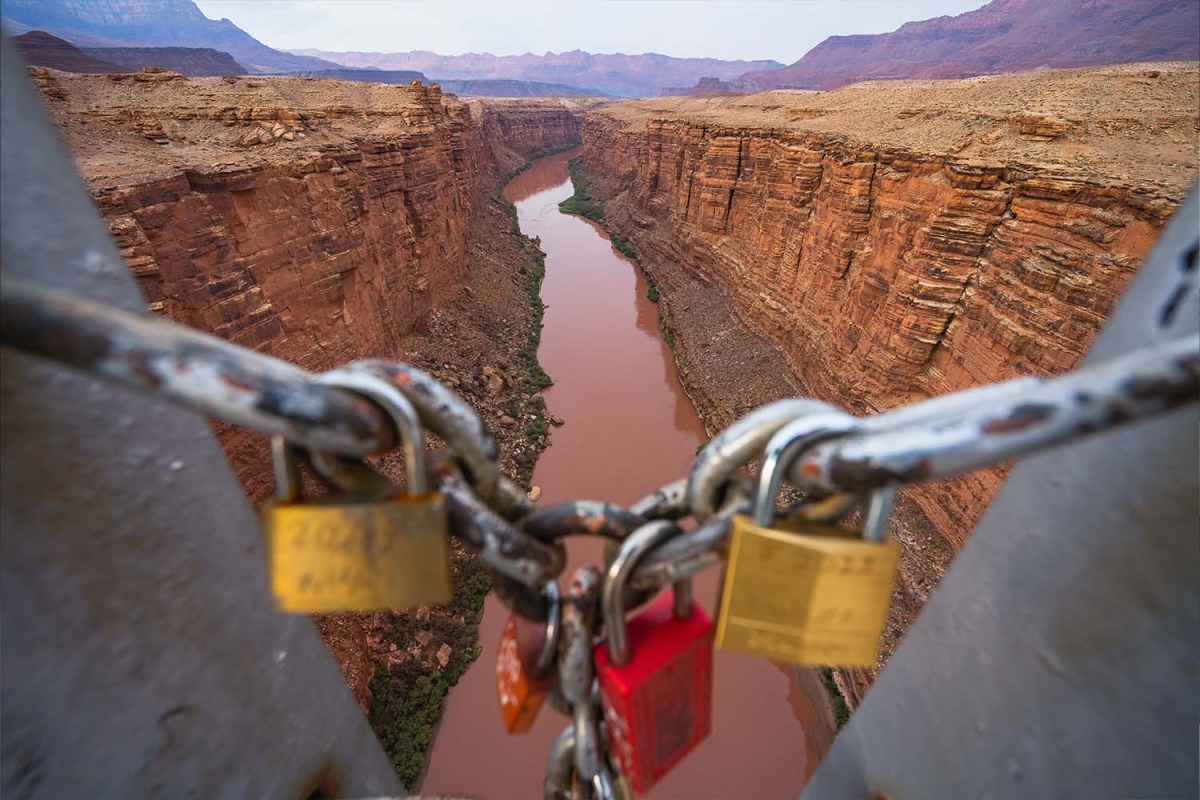The National Park Service has asked visitors to stop leaving “love locks” in and around national parks, and for good reason.
The act of affixing padlocks to various bridges and fences and then throwing the keys away poses a serious health risk to the parks’ wildlife, especially birds. According to a Facebook post from Grand Canyon National Park, “Condors are curious animals and much like a small child will investigate strange things they come across with their mouths.” They are not, however, equipped to pass metal through their digestive systems naturally. Once a key has been ingested by a bird, they can require surgery. Often, it leads to death.
“People think putting a lock on fencing at viewpoints is a great way to show love for another person. It’s not,” the post reads. “Leaving [padlocks] like this is littering and a form of graffiti. But because people will throw their padlock key into the canyon the scenario becomes worse and more dangerous specifically for a rare and endangered animal of the canyon.”
As Travel + Leisure explains, the Grand Canyon is home to the California condor — the largest land bird in North America. Further, it is one of the rarest birds in the world and while it was once nearly extinct, it’s now classified as endangered. As such, protection efforts remain paramount.
That said, national parks aren’t the only places where love locks are an issue. In Paris, where the love lock custom really took off in the early aughts, the Pont des Arts bridge became a coveted destination for lovers who wished to commemorate their trip in the form of attaching an inscribed lock to the chainlink fence and then throwing the key to the lock off the bridge into the water below.
The Disrespectful Tourist Headlines Are Getting Out of Control
And it begs the question: do these smooth-brained people even deserve to travel?“The bridge had become a huge attraction in and of itself,” Matt Hershberger wrote in 2018 for Matador Network. “Hawkers sold locks (and sharpies, for those who wanted to sign their name to their crime) to passing couples on the bridge, and, in spite of warnings from French officials that it was not really good for the bridge to be weighed down by tens of thousands of locks, the tradition exploded.”
As Hershberger posited, padlocks on their own don’t weigh much. But thousands of them? A portion of the Pont des Arts fence eventually — and unsurprisingly — collapsed. After all the locks were then taken down, French officials confirmed that they weighed a collective 45 tons. The keys, for their part, were never retrieved, but it’s estimated that — at the time — there were over 700,000 at the bottom of the Seine. It doesn’t take a certified ecologist to see how that would be a bad thing.
Early signs that love locks could be detrimental to the environment did little to prevent the trend from spreading — to other cities across the world, and eventually national parks. Given the extensive damage that is now abundantly clear, spreading from infrastructure to endangered animals, the onus is now on every single tourist who visits these destinations to help mitigate the effects love locks have had in that time.
That is, discontinue the tradition immediately.
Thanks for reading InsideHook. Sign up for our daily newsletter and be in the know.



















